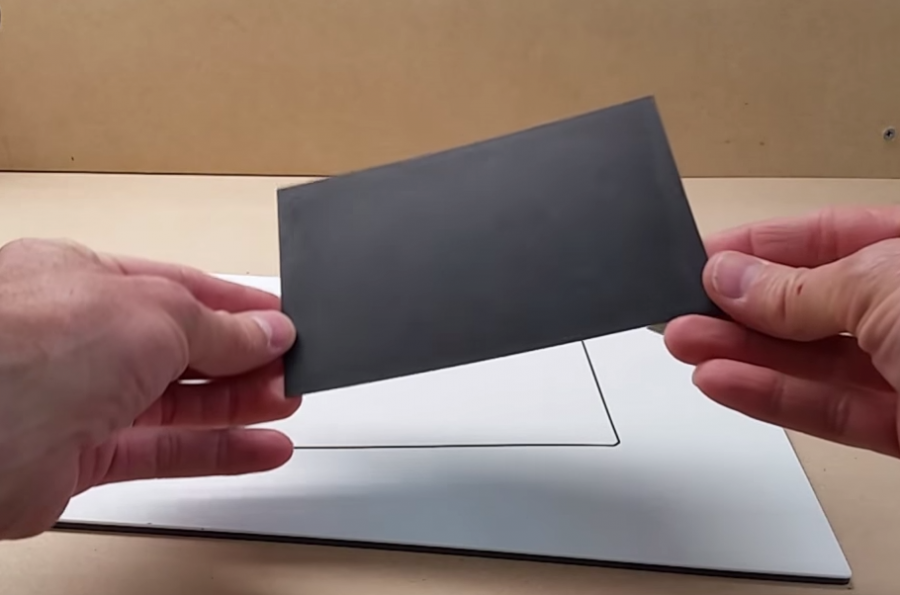 You know an industry is still new when the best solution most manufacturers offer for removing the object that you just 3D printed from the printing bed is to coat it with painter’s tape or spray the surface with hairspray. To be fair, several of the larger 3D printer manufacturers have begun offering their own alternatives, but for the most part it has fallen on third party companies to provide better options. In the last year several companies have produced materials specifically made to help remove objects from beds, but needing to stick, paint on or spray a material on the bed still seems like an unnecessary added step. Especially if time is a factor and you have multiple projects that need to be completed.
You know an industry is still new when the best solution most manufacturers offer for removing the object that you just 3D printed from the printing bed is to coat it with painter’s tape or spray the surface with hairspray. To be fair, several of the larger 3D printer manufacturers have begun offering their own alternatives, but for the most part it has fallen on third party companies to provide better options. In the last year several companies have produced materials specifically made to help remove objects from beds, but needing to stick, paint on or spray a material on the bed still seems like an unnecessary added step. Especially if time is a factor and you have multiple projects that need to be completed.
One of the more effective, and logical, solutions is a flexible printing plate that can be clipped into place over your printer’s bed, so when the job has ended the object can be released with a simple twist. There are a few different options available made of different materials of varying quality.
PRINTinZ was one of the first companies to offer flexible printing plates with their Ninja Plate. Their plates are made with a thermoform plastic material that has a very high melting point, so users won’t have to worry about the hot plastic from an FDM 3D printer melting into it. It also is textured to help keep prints in place and prevent warping at the same time.
After almost two years of experience with flexible print plates, PRINTinZ has used all of the feedback from their customers, good and bad, to produce the Zebra Plate. Not only does it perform better than their previous iterations, but it is stronger and they even made it a bit cheaper. They also made their new plate dual colored, with a black side and a white side, so the first few layers can easily be monitored no matter what color filament is being used. Just like their previous printing bed plates, the finished object can be scraped off with a thin putty knife or spatula, or simply popped off with a twist. However, a spatula will most likely be required for removing any skirting material from the first layer of printed plastic.
The Zebra Plate is available in multiple sizes for just about every 3D printer on the market, from large brand name printers like MakerBot, Ultimaker or Printrbot, to more obscure delta and RepRap builds. There are also several sizes that can be used with most custom builds and kits. They range in price from $13 to about $50, and even have a large $70 option for a 10.5″ x 11.8″ build plate. The plate should match as closely as possible to your printer’s build plate and simply needs to be held in place with a few clips. That makes the plate easy to remove, and gives you the option to start a new print while a freshly completed print is still cooling off.
Take a look at this video showing off the features of the Zebra Plate:
3D printers with heated beds can also use a Zebra Plate, although the temperature might need to be adjusted to compensate for it. PRINTinZ suggests that users attempt to use PLA without a heated bed; however, if the part has an odd geometry or is prone to warping they suggest heating it slightly, but not going above 40° C.
While the Zebra Plate can be used for ABS prints, it is not ideal for larger parts or parts using 100% infill, as it may be too hot and warp the plate and damage the printing surface. When using ABS the bed can be heated to about 110° C, which will make the top surface of the plate about 70° C to 80° C. PRINTinZ suggests that users attempt to keep the surface level at about 50° C however, and only try incremental temperature increases as needed. More exotic materials like PETG, Laywoo-D3 and BronzeFill can be used similarly to PLA, and PRINTinZ plans to test more materials in the coming weeks.
PRINTinZ has just launched a new Zebra Plates section to their website where they provide all of the products’ size and pricing options. It also has detailed support and usage tips that can help users prolong the life of their plate and several videos showing how to remove prints and exploring the multiple filament options that can be used with it. Check out the new plates and let us know what you think about them on our Flexible Zebra Plate from PRINTinZ forum thread at 3DPB.com.
Subscribe to Our Email Newsletter
Stay up-to-date on all the latest news from the 3D printing industry and receive information and offers from third party vendors.
You May Also Like
3D Printing Webinar and Event Roundup: May 5, 2024
We’ve got a busy week of 3D printing events ahead of us, in Texas, Florida, Washington, D.C., Shanghai, and more. Webinar offerings will cover medical models, PolyJet 3D printing, additive...
High Stakes, High Speed: KVG Acquires 15 Nexa3D HSE 3D Printers to Boost Military Tech
As 3D printing increasingly intersects with defense and military logistics, a new partnership between Nexa3D and mission support logistics firm KVG stresses the growing importance of this technology in strategic...
Construction 3D Printing CEO Reflects on Being Female in Construction
Natalie Wadley, CEO of ChangeMaker3D, could hear the words of her daughter sitting next to her resounding in her head. “Mum, MUM, you’ve won!” Wadley had just won the prestigious...
3D Printing News Briefs, February 17, 2024: Shot Blasting, Service Bureaus, & More
In today’s 3D Printing News Briefs, we’re starting out with post-processing, as SKZ Würzburg is using a shot blast system from AM Solutions for its research. Moving on to business,...

































